Sea Otter Classic 2015. The Year of Center Drive Motors [VIDEOS & PICS]
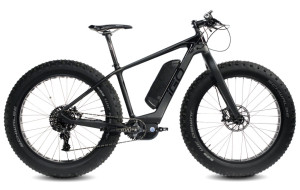
This year’s Sea Otter Classic was the year of the center drive (mid drive) motor.
Not that there wasn’t strong representation of hub motors by Bionx, BESV, IZIP, Specialized, and others. It seems that the focus of this year’s Sea Otter Classic was companies introducing new models with center drive motors.
I believe that there are three main reasons center drive motor bikes outnumbered hub drive motors this year at the Sea Otter Classic:
First, the Sea Otter venue caters to bike riders who are used to riding non-electric bikes on all terrains. For non-electric bike riders thinking of buying an electric bike for road or mountain riding, the center drive motor, most with no throttle, simulates the bicycle riding experience closer than a hub motor with a throttle.
Second, the venue draws more manufacturers who sell or hope to sell through independent bike dealer (IBD) channels. The IBD channel, for the most part, prefer electric bikes which ride more like traditional bikes then electric bikes, meaning; smaller motors, no throttles, and center balanced, to simulate the ride of conventional bikes.
Third, there are now more manufacturers offering center drive motors, giving bicycle companies more options to choose from.
Of the four center drive manufacturers, Bosch and Shimano had their own booths at the show. Bosch was at last year’s Sea Otter and showed strong representation by being used on Felt, Lapierre, Haibike, and Xtracycle electric bicycles.
Bosch announced their that eShift system, which integrates with drivetrains from NuVinci, SRAM, and Shimano, will be available in the U.S. market soon.
Shimano introduced their STePS System at this year’s Sea Otter. Shimano STePS is a system which incorporates a center drive motor, battery, as well as an electronic shifter. Most of the electronics are built into the weatherproof drive unit.
The Raleigh Misceo iE I tested incorporated the Di2 internal gear hub, with electronic shifting that seamlessly integrated with the drive unit. Unlike some other center drive motors that seem to have a noticeable clunk when shifting, the Di2 internal hub briefly reduced power as shifts are made, changing gear is so smooth is was almost unnoticeable. The Raleigh also shifted down automatically when I came to a stop which made the system very easy to use.
The 250 watt Shimano STePS powered Raleigh could climb hills with very little effort. According to the Shimano Tech, I spoke with, he said it is the pairing of the motor and internal hub that allows the Raleigh to climb steep hills with the apparent power of bicycles with twice the power.
CurrieTech showed off a number of new models with the Currie Electro Drive 350 watt mid drive systems, including the Peak DS with rear suspension, the E3 Sumo fat tire bike, and the joint project Spicy Curry cargo bike by Yuba.
Later in the year (or early next year) they plan on replacing the hub motor on the Dash with the Currie Electro Drive 350 watt mid drive and adding the Shimano STePS System to the Path Plus.
MPF Drive was another center drive system, which was represented at Sea Otter. The MPF Drive allows the use of a conventional front derailleur and incorporates three sensors to record crank torque and speed as well as bicycle speed. The battery paired with the motor uses Panasonic Li-lon cells, and incorporates a CAN Bus to communicate with the motor.
CAN Bus will probably become standard on most high-end electric bikes in the future because it allows direct communication to the rider, allowing the rider to receive real-time information on the state of the bicycle as well as to customize the bike to meet his or her riding requirements.
Not only does the CAN Bus system allow the electric system to gather accurate vehicle range and diagnostic information, but it also provides diagnostic trouble code information for better serviceability. It also allows the service center to troubleshoot problems or even to do predictive maintenance to avoid problems altogether.
Two companies that exhibited at Sea Otter for the first time with MPF Drives were Tempo Bike and iGo. Tempo, a start-up electric bike company located in the south end of Silicon Valley introduced three new models of commuter and street bikes. iGo introduced three models of mountain and Fat tire bikes, demonstrating the versatility of the MPF Drive System.
Some of the highlights of the Tempo Bikes were its simplicity and ease of riding. The Tempo Bike gets rid of all the hassle and brings on many possibilities. From the Gates Carbon Drive belt system that allows you to commute to work without the worry of getting your pants or skirt grease or stuck in the chain, to the automatic transmission in the rear hub from Nuvinci that allows the rider to pedal at a constant speed regardless of their speed or incline. The Tempo Bike helps make electric bike riding as simple as can be.
The iGO fat tire bikes are high-quality off-road bikes with the MPF center drive system. Despite having a fat tire, the pedal assist can power the rider beyond 20 mph. The iGo has no cutoff point for the pedal-assist and will assist the rider, as long as they are putting in effort.
The following are a few of the hub motor bikes that were on display.
BESV had their futuristic looking electric bikes on display.
OHM Cycles had their XU700 on display. It features the high torque BionX D Series motor system.
This is the Bike Friday Haul-a-Day cargo bike with the BionX system. It’s a cargo bike that fits a wide range of riders from 4′ to 6′-4″ with a low step over to make it easy to get on and ride.
Here is a video of e-bike test rides and the rider’s impressions of riding these bikes:
Thanks to Doug Schwartz from ELV Motors for this report from the Sea Otter Classic!
Stay tuned for more e-bike news and reviews.
P.S. Don’t forget to join the Electric Bike Report community for updates from the electric bike world, plus ebike riding and maintenance tips!
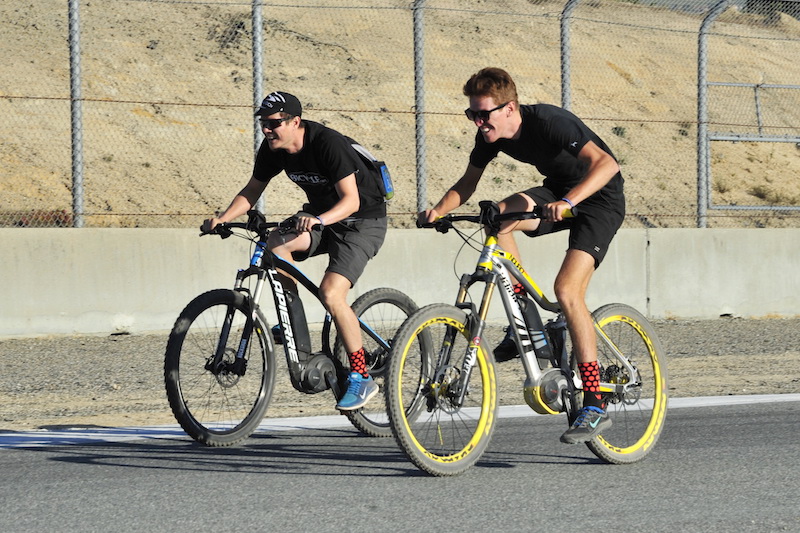
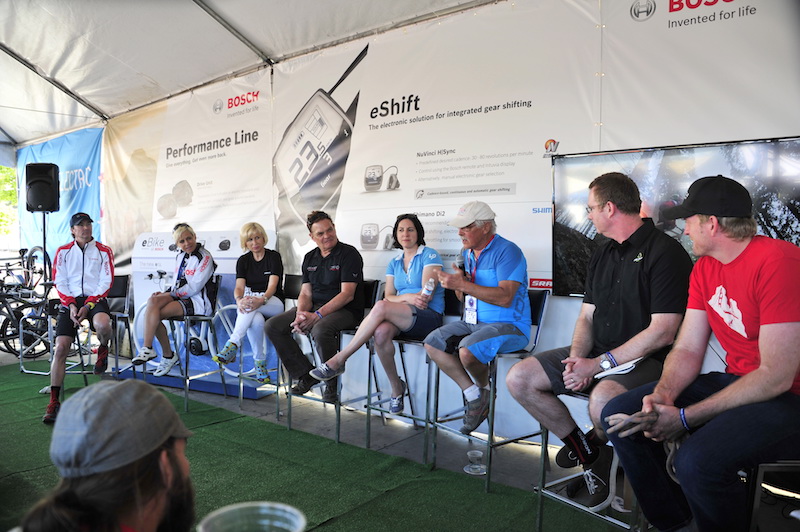
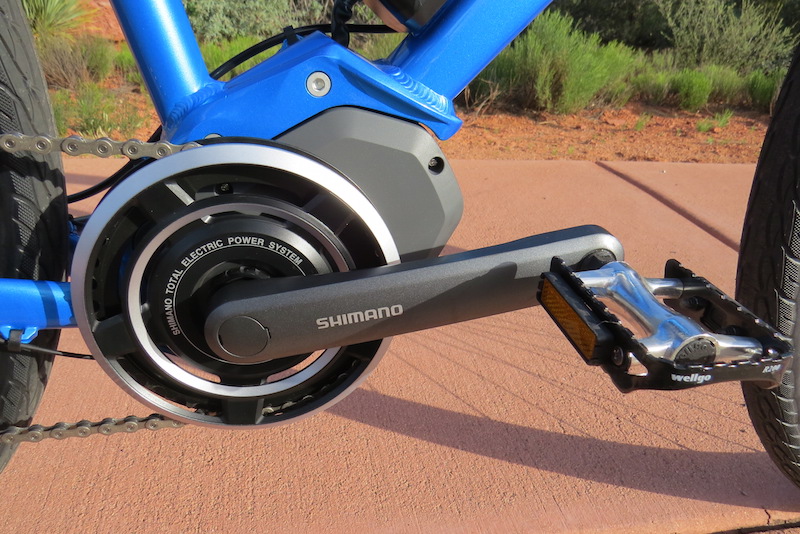
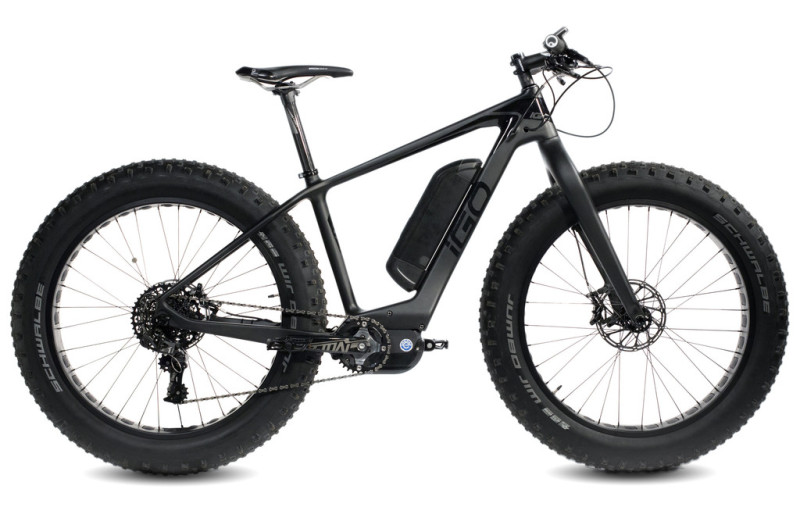
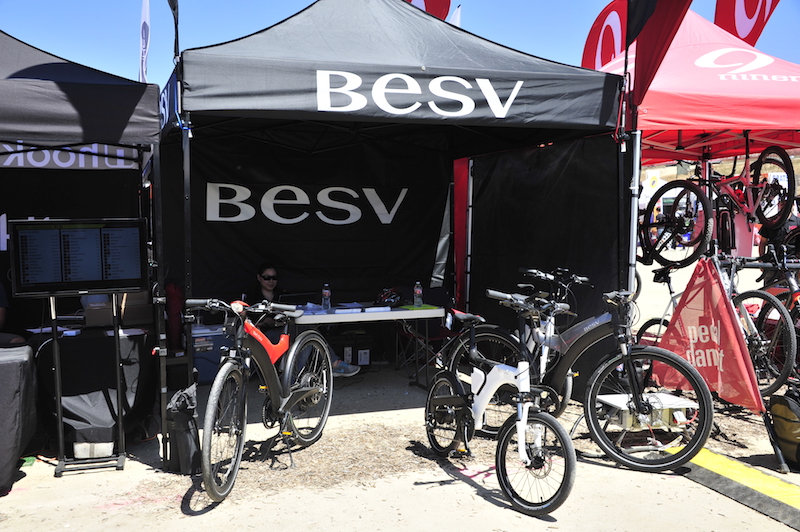
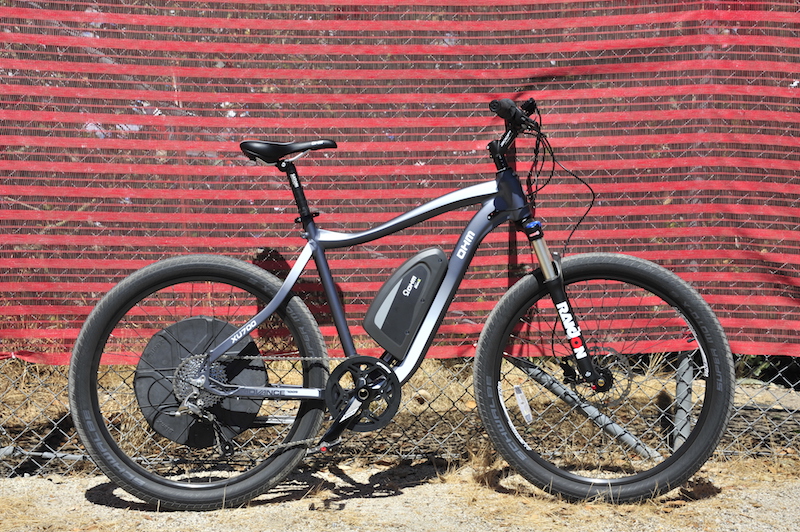
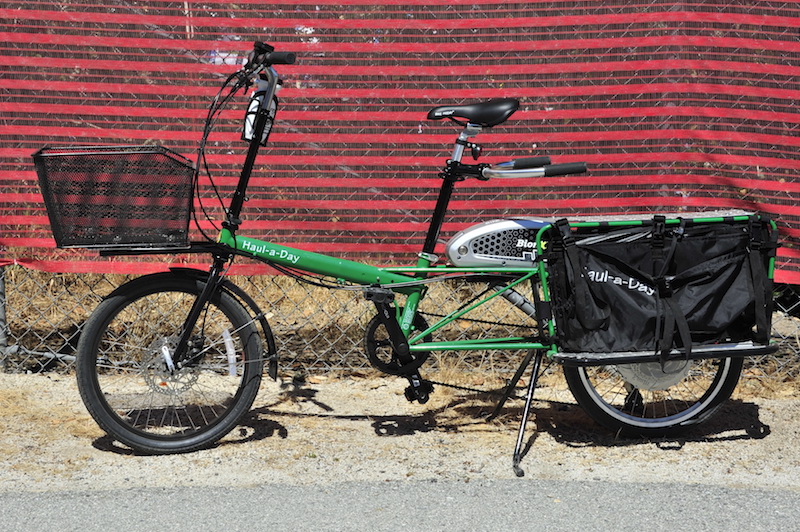



all the big name mid motor edrives, bosch, panasonic,
impulse, yamaha, conti, MPF,
have a momentary power reduction
to reduce gear change thunk and
reduce wear on the drivetrain
it’s almost become a non-feature because they all have it
again with 3 sensors,
all the major edrives have a torque, ground speed and
cadence sensor to help make the riding experience
as much like riding a regular pedal bike but with e-assist
this is the difference between a cheap
throttle actuated edrive, which is really an e-moped
and the more sophisticated pedelec ride
i’m glad the reviewer mentions that a 250w mid drive
is as powerful a hill climber as a hub system 2x or 500w and
delivers a much more pedal bike type ride experience
the mid drive is so much more efficient than
a hub drive (the hub drive needs a bigger battery
to get reasonable range) so the battery capacity can be
small, lighter, less expensive and still get long range
the other benefit of a pedelec is it’s great health benefits
the rider is still doing most of the work
the temptation with the e-moped is to let that system
do most if not all of the work = little health benefits
canbus has become the standard of choice,
i think shimano may be the only proprietary comm’s system
good revue, thanks
Great article Doug and great quote.
“The IBD channel, for the most part, prefer electric bikes which ride more like traditional bikes then electric bikes, meaning; smaller motors, no throttles, and center balanced”.
My experience is that most ebike buyers like bigger motors, throttles and center balanced 😉
They also prefer a comfortable seat and upright seating position.
Pete: It looks like you picked up my meaning when I mentioned center drive motors with no throttles appeal to traditional bike riders and IBDs. As the owner of an electric bike store since 2008, I sell more hub motor electric bicycles with both throttle and pedal assist than center drive motors or bicycles with just pedal assist or just throttle.
Most of my customer use their electric bike to replace a car (not a bicycle) for commuting and running errands. They get exercise during these trips while saving money on gas and parking.
A good example of a company that designs electric bicycle that are bike-like and have hub motors, pedal assist and throttle is BH Emotion..
Mid-drive, pedal assist ebikes will continue to overtake hub motor technologies as time goes on and the technology trickles down market because there are so many advantages for those that want a “bicycling” experience. That said, some want a throttle for a number of reasons and there will continue to be a place on the market for throttle actuated bikes as some just want to be able to not pedal at all. Not really a true bicycle experience but better then driving a car, for sure.
@Larry Pizzi: I’m glad that you mentioned that there will always be a market for throttle type bikes. Although in my application, it’s not that I don’t want to pedal at all, it’s that I need it if I injure my leg like I have in the past. The bike doesn’t have to ride at 20mph in throttle mode, it’s just got to get me home safely.
Good point Ed, I like pedaling as much as the next person, the addition of a throttle does not take away from the bicycling experience, just makes it safer, for the reason you mentioned and when more precise control is needed. There is no need to make throttles illegal, if you don’t like them, don’t use them.
Having a throttle allows a rider to get off the mark faster at a stop light, and allows them to mount the pedals quicker and start assisting. This makes for a SAFER riding experience when commuting in traffic, vs pedelec alone.
I think the lawyers should think about that one.
Also, when descending a hill and the gears top out, one can tuck and use the throttle to maintain speed. This is also safer than trying to over pedal at a high speed. Of course, slowing down is even safer, but most riders want to keep momentum and speed.